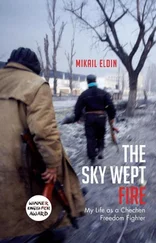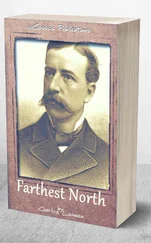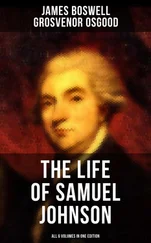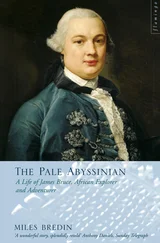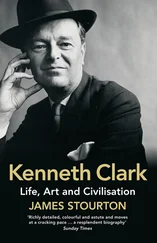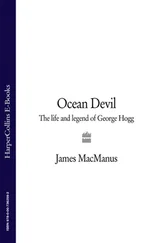1 ...8 9 10 12 13 14 ...25 Back at police headquarters, in the detective bureau, Carter found himself in a windowless interrogation room. It was familiar ground. He had been questioned in the same room twenty years earlier for stealing clothing at an outdoor market. (His father had turned him in.) Two battered metal chairs and a table sat beneath a cracked, dirty ceiling. Artis was left to stew in a separate room, which had green walls, a naked light bulb, and a one-way mirror in the door. Artis could see, between the door and the floor, the black rubber soles of the officers outside his door. He knew they were watching him.
Both men lingered in their separate rooms for several hours, their alcoholic buzz long worn off. They simply felt exhaustion. At around 11 A.M., the door to Carter’s room opened and Lieutenant Vincent DeSimone, Jr., walked in. The two men had a history. DeSimone joined the Paterson Police Department in 1947 and had been one of the officers who questioned the teenage Carter after he assaulted the man at the swimming hole. DeSimone was a coarse and intimidating old-school cop, who would quip about suspects, “He’s so crooked, they’ll have to bury him standing up.” A relentless interrogator, he was known for his ability to elicit confessions through threats and promises. He would do anything for a confession, including pulling out a string of rosary beads to bestir a guilty conscience. He hated the 1966 Miranda decision, in which the U.S. Supreme Court ruled that no confession can be used against a criminal defendant who was not advised of his rights. The ruling, DeSimone feared, gave confessed criminals a loophole. *
In the 1950s he joined the Passaic County Prosecutor’s Office as a detective specializing in homicides, and he was known for keeping index cards in his pocket so he wouldn’t have to carry a notebook. His bosses viewed him as the finest law enforcement official in the state, their own Javert, and his power and reputation were unquestioned.
But on the streets of Paterson’s black community, DeSimone had a different reputation entirely, for he embodied the racist, bullying tactics of an overbearing police force. His confessions had less to do with gumshoe police work than with intimidation, and he was feared. Frankly, he looked scary. In World War II he had taken a grenade blast in the face, and despite several surgeries, his jowly visage was disfigured. A scar inched across his upper lip, which was pulled tightly back, and drool sometimes gathered at the side of his mouth. He had thick eyeglasses, spoke in a gravelly voice, and wore an open sport jacket across his thick, hard gut, revealing his low-slung holster.
DeSimone was tense when he entered Carter’s holding room. He had been awakened at 6 A.M. with news of the shooting, and he stopped off at the crime scene before going to the police station. Despite his many years in police work, this was his first interrogation for a multiple homicide.
“I’m Lieutenant DeSimone, Rubin. You know me.” He sat down heavily and pulled out his pen and paper.
“You can answer these questions or not,” he continued. “That’s strictly up to you. But I’m going to record whatever you say. Just remember this. There’s a dark cloud hanging over your head, and I think it would be wise for you to clear it up.”
“You’re the only dark cloud hanging over my head,” Carter said.
DeSimone was joined by two or three other officers. Over the next couple of hours, Carter recounted his whereabouts on the previous night, from the time he left his home after watching the James Brown special to his two encounters with Sergeant Capter. He mentioned his trip to Annabelle Chandler’s and various club stops. When DeSimone finally told Carter that four people had been shot, Carter waved off the suspicion: “I don’t use guns, I use my fists. How many times have you arrested me around here for using my fists? I don’t use guns.”
Carter was certain the interrogation was just another example of police harassment for his bellicose reputation. He felt his position on fighting was well known to DeSimone and the other officers: he would fight only if provoked. He did not imagine that even an old antagonist like DeSimone would consider him a suspect for killing people inside a bar he had never entered.
During the questioning, DeSimone shuttled back and forth between Carter and Artis in parallel interrogations. It was more difficult to write down the answers from Artis, who spoke faster. DeSimone also told Artis that “there was a dark cloud hanging over you,” but he said the young man had a way out. “When two people commit a murder, you know who gets the short end of the stick? The guy who doesn’t have a record, and you don’t have a record. That’s the guy they really stick it to. Tell us what you know.”
“I don’t know anything,” Artis said.
By midday Carter’s wife heard he had been picked up, and she came to the station.
“Do you want me to call a lawyer?” Tee asked.
“What do I need a lawyer for?” Carter responded. “I didn’t do anything, so I’ll be out of here shortly.”
Later, while Carter was heading to the bathroom, he was taken past several witnesses who supposedly saw the assailants fleeing the crime scene. One was Alfred Bello, a squat, chunky former convict who was outside the bar when the police arrived. He told police at the crime scene that he had seen two gunmen, “one colored male … thin build, five foot eleven inches. Second colored male, thin build, five foot eleven inches.” Another was Patricia Graham, a thin, angular brunette who lived on the second floor above the bar and said she saw two black men in sport coats run from the bar after the shooting and drive off in a white car. Both Bello and Graham would later provide critical testimony in the state’s case against Carter, giving different accounts from those in their initial statements.
A police officer asked the group of witnesses if they recognized Carter. “Yeah, he’s the prizefighter,” someone said. Asked if he had been spotted fleeing the crime scene, the witness shook his head.
After DeSimone completed his questioning of Carter, he gathered up his papers. “That’s good enough for the time being, but there’s one thing more that I’d like to ask. Would you be willing to submit to a lie detector test?”
“And a paraffin test, too,” Carter said without hesitation. “But not if any of these cops down here are going to give it to me. You get somebody else who knows what he’s doing.”
At 2:30 P.M., Sergeant John J. McGuire, a polygraph examiner from the Elizabeth Police Department, met Carter in a separate room. A barrel-chested man with short hair, McGuire had just been told about the shootings, and he was in no mood for small talk. “Carter, let me tell you something before you sit down and take this test,” he said in a tight voice. “If you have anything to hide that you don’t want me to know, then don’t take it, because this machine is going to tell me about it. And if I find anything indicating that you had anything to do with the killing of those people, I’m going to make sure your ass burns to a bacon rind.”
“Fuck you, man, and give me the goddamn thing.”
McGuire wrapped a wired strap around Carter’s chest, and Carter put his fingers in tiny suction cups. He answered a series of yes-or-no questions and returned to his holding room. After another delay, McGuire showed up and laid out a series of charts tracking his responses. DeSimone and several other officers were there as well. Pointing to the lines on the chart, McGuire declared, “He didn’t participate in these crimes, but he may know who was involved.”
“Is that so?” DeSimone asked.
“No, but I can find out for you,” Carter said.
Читать дальше

